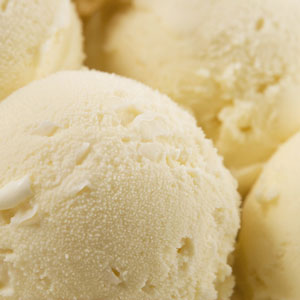Environmentally efficient freezers for cool ice cream
- Like
- Digg
- Del
- Tumblr
- VKontakte
- Buffer
- Love This
- Odnoklassniki
- Meneame
- Blogger
- Amazon
- Yahoo Mail
- Gmail
- AOL
- Newsvine
- HackerNews
- Evernote
- MySpace
- Mail.ru
- Viadeo
- Line
- Comments
- Yummly
- SMS
- Viber
- Telegram
- Subscribe
- Skype
- Facebook Messenger
- Kakao
- LiveJournal
- Yammer
- Edgar
- Fintel
- Mix
- Instapaper
- Copy Link
Posted: 4 December 2014 | Nestlé | No comments yet
Freezers are so commonplace in our homes, supermarkets and factories, few of us give them a second thought…


Freezers are so commonplace today in our homes, supermarkets and factories, few of us give them a second thought.
But they are so ubiquitous that the substances used in their cooling mechanisms matter.
Some cooling substances can contribute to climate change when released to the environment.
It is just over a century since the first refrigerators for home use were invented.
Refrigerators and freezers were used in business for about 40 years before they became more common in the home.
Fresher, for longer
A freezer is basically a thermally insulated box that uses a heat pump to transfer heat from inside to outside, ensuring that the temperature inside is maintained at a constant temperature far lower than the air outside.
Food stored in a freezer keeps fresher for far longer than when refrigerated.
The freezer mechanism contains a coolant which, during the refrigeration cycle, changes from a liquid to a gas and back again.
The problem is that different coolants have different costs and benefits.
Fluor-containing coolants became commonplace in the second half of the last century.
Though non-toxic to humans, evidence emerged that they depleted the ozone layer and also contributed to climate change, so they are being phased out.
Instead, manufacturers are now turning back to some of the naturally occurring substances used in white goods until the 1930s , when the new synthetic alternatives first came onto the market.
These natural coolants include carbon dioxide, ammonia, water and air as well as hydrocarbons – like propane and iso-butane – which do not harm the ozone layer and also have no or a negligible impact on climate change.
Technological advances mean that these coolants can now be safely used in modern freezers, in models that use around half as much energy as those that were commonplace 10 years ago.
Keeping food safe
A commercial freezer in a shop has to cope with a lot of opening and shutting as people pick goods from inside, and is often moved between different spaces during hot months, so it usually requires a larger cooling mechanism than the one you have at home.
From January 2015, every new horizontal chest freezer Nestlé buys to store ice cream will use natural refrigerants rather than synthetic refrigerants.
These new freezers represent 70% of Nestlé’s total spend on freezers.
As well as helping reduce the company’s carbon footprint, they are also far more efficient for customers to run.
Nestlé plans to make all the freezers it uses more environmentally efficient by only buying those cooled by safe, natural refrigerants over the coming years.
Global pledge
“Already, in 2013, Nestlé committed itself to buying only new horizontal ice cream chest freezers with natural refrigerants in Europe,” said Pascal Gréverath, Head of Environmental Sustainability at Nestlé.
“Now, we are making this pledge global. This is the second stage in a wider process of making our entire fleet of freezers more environmentally efficient, cooled using natural refrigerants.
“These actions contribute to ensuring that Nestlé products are not only tastier and healthier but also better for the environment along the entire value chain.”
The company has invested CHF 250 million to implement natural alternatives in 93% of its industrial refrigeration systems.
Phasing out
The pledges are part of Nestlé’s aim to provide further climate change leadership.
These include its commitment to progressively phase out the use of high global warming potential refrigerants, such as hydrofluorocarbons (HFCs).
Nestlé is also implementing the Consumer Goods Forum Resolution (CGF) on Refrigeration – which encourages businesses to take action towards phasing out some HFC refrigerants from 2015 – ahead of time.









